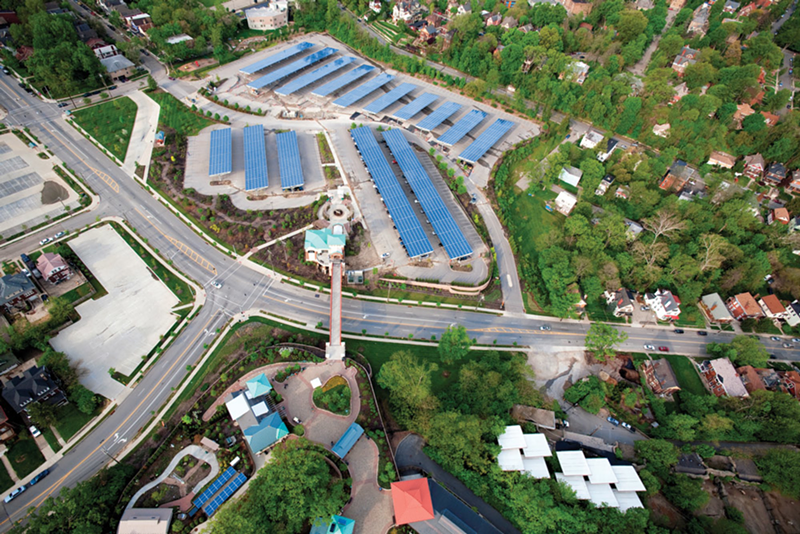The Cincinnati Zoo and Botanical Garden added to its ever-expanding list of green accolades this week when its Base Camp Cafe was named the "greenest restaurant in America" by the Green Restaurant Association, a welcome but not-so-surprising accomplishment from the same locale that calls itself the "greenest zoo in America."
According to the zoo's website, its sustainability push kicked off in 2006, and since then they've been in the news almost constantly for different initiatives, innovative ideas and successes in the world of green. Makes perfect sense particularly in a zoo, where the main mission is already, you know, dependent upon preservation, conservation and respecting nature.
The Base Camp Cafe apparently earned the highest sustainability score the Green Restaurant Association has ever given out, which makes us wonder what else the zoo possibly has in store to keep up prized No. 1 title. Right now, the cafe is fueled partly by solar power, offers a full recycling (and composting!) program, uses some local produce and most of the tableware is compostable, including plates, bowls, cups and utensils. The zoo also recycles chip bags and candy wrappers (normally landfill material) through upcycler TerraCycle.
Today, you can find the zoo's obsession with sustainability lurking around pretty much every corner. By resource saved, here are some of their other greatest hits, by no means a comprehensive rundown:
Water
- Since 2006, the zoo's water consumption has been reduced by one-third, thanks to fixed leaks, low-flow water pumps and behavioral changes. Pervious pavement cuts down on water pollution and flooding green roofs (roofs covered with live plants) and raingardens make use out of rainwater and cut down on runoff, which can cause erosion and pollution.
Solid Waste
- In 2012, the zoo made a commitment to work toward becoming an zero landfill facility, which would mean that less than one percent of their total waste stream would be sent to the landfill. Almost every area composts in some way — old food, bedding, animal waste — around eight tons of material every week. Recycling bins are paired up with every trash can.
Energy
- The solar energy panels at the zoo are perhaps its most recognizable green achievement, having garnered national attention particularly for the panel canopy structure over the Vine Street parking lot, which is the largest urban, publicly accessible panel in the U.S. The zoo also uses wind turbines, geothermal wells that help naturally regulate the temps inside zoo buildings, and, potentially, an anaerobic digester that would use elephant poop to produce power.
Congrats, Cincinnati Zoo! We can't wait to see what you have in store next.






